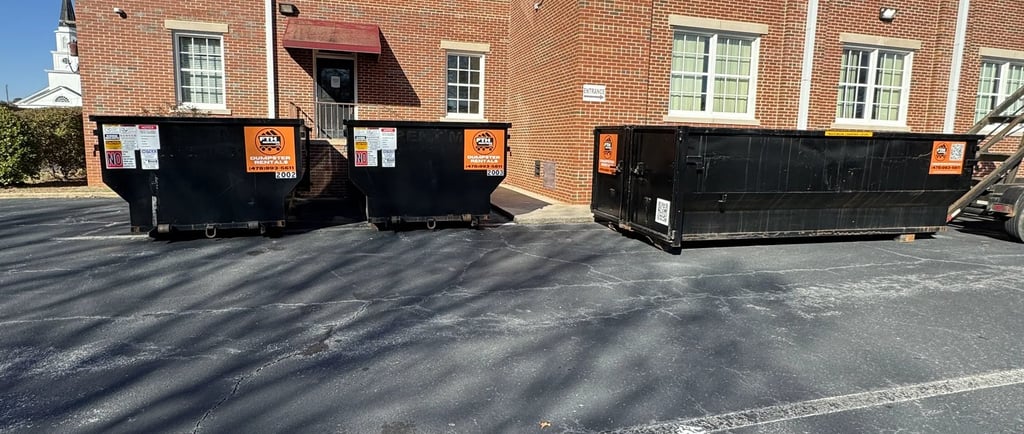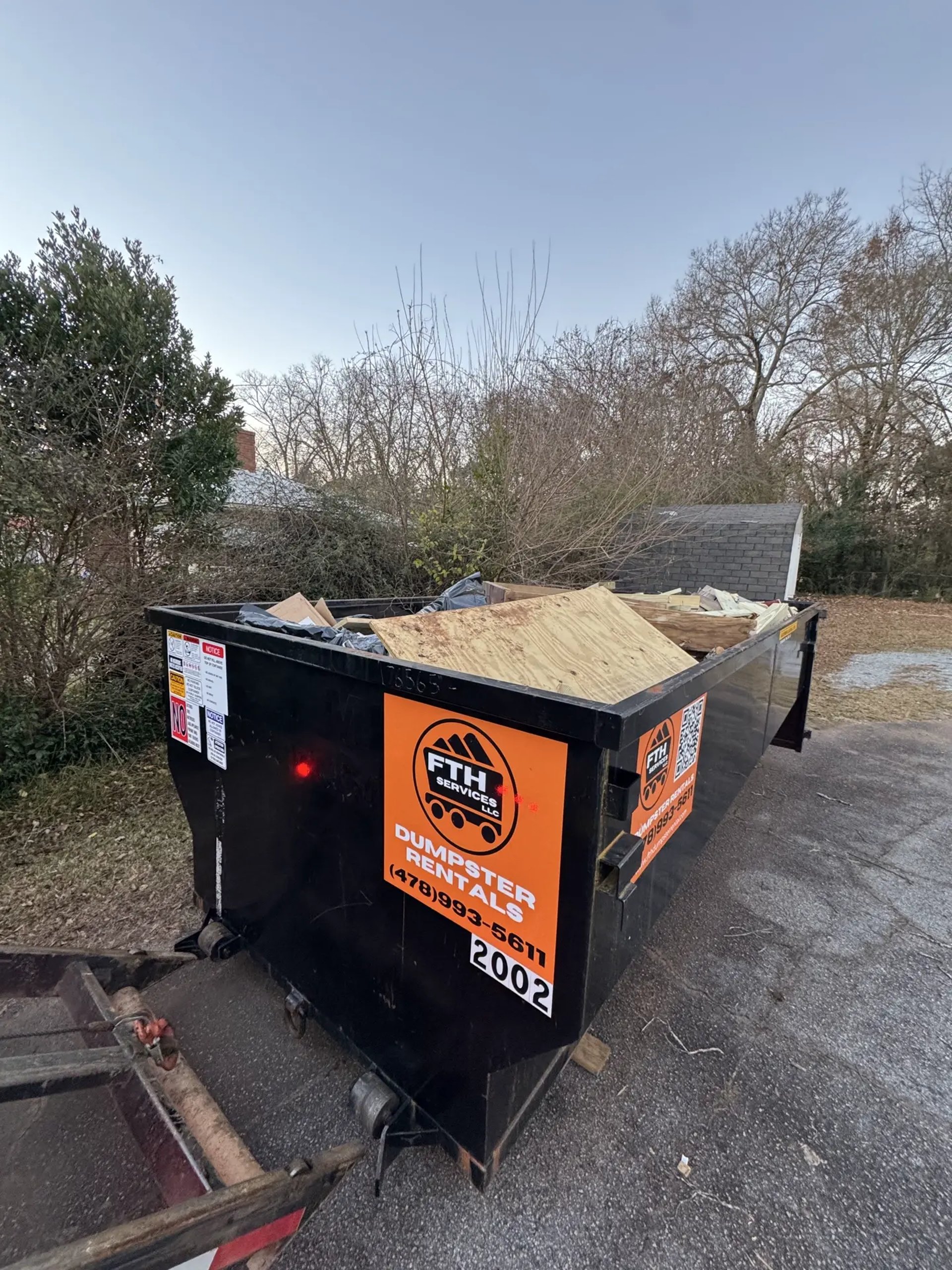Understanding Roll-Off Dumpsters
Roll-off dumpsters are large, rectangular containers designed for transport and disposal of waste materials. Their practical design allows for easy loading and unloading, making them popular for various projects, such as construction sites, home renovations, and large cleanouts. Typically constructed from steel, these dumpsters have an open top that enables seamless accessibility for loading debris. The roll-off feature, which refers to the ability to roll the container off a truck, is crucial for efficiently managing waste in urban and suburban environments.
Roll-off dumpsters come in several sizes, ranging from 10 to 40 cubic yards. Smaller 10 or 15-yard containers are suitable for minor home projects or cleanouts, while larger sizes like 30 or 40 yards are more appropriate for substantial construction jobs or significant waste removal tasks. The size you choose should correspond to the volume and type of waste you expect to generate during your project. For instance, a 20-yard dumpster is usually ideal for decluttering a multi-room home or for small to medium renovation projects.
Common materials accepted in roll-off dumpsters include construction debris, household items, yard waste, and certain types of appliances. However, it is important to note that hazardous materials, such as chemicals and certain electronic waste, typically cannot be disposed of in these containers. Proper loading techniques are essential for ensuring weight distribution, which maximizes load capacity and helps prevent damage to the dumpster and surrounding property. Balancing the load not only enhances safety but also adheres to the guidelines set forth by disposal facilities. By understanding these essential characteristics of roll-off dumpsters, users can optimize their waste management efforts and select the right container for their specific needs.
Planning Your Loading Strategy
Effective planning is crucial when it comes to loading a roll-off dumpster. A well-thought-out approach not only ensures that space is used efficiently but also facilitates the overall waste disposal process. Before the dumpster arrives, it is advisable to assess the types and quantities of waste materials that will be disposed of. This assessment allows for a clearer understanding of how to organize the loading process and optimize space within the container.
One essential aspect of planning is sorting items for easier disposal. Different materials may require specific disposal methods or handling techniques. By categorizing waste into groups, such as construction debris, household items, organic waste, and recyclable materials, you can streamline the loading process. For example, bulky items can be placed at the bottom of the dumpster, while lighter materials should be stacked on top. This sorting strategy not only maximizes space but also helps maintain safety and efficiency during the loading operation.
Creating a loading plan can significantly enhance your ability to fit as much waste as possible into the dumpster. Start by sketching a rough layout of how items will be arranged. Consider the shape of the dumpster and the dimensions of the waste materials. Aim to position larger items in a manner that complements the available space, while smaller items can fill in gaps. This proactive planning reduces the likelihood of wasted space and ensures that the roll-off dumpster is filled to its capacity.
Additionally, timing and preparation before the dumpster's arrival are key factors that influence loading efficiency. A pre-established schedule for when and how items will be loaded can minimize delays and confusion during the process. By taking these preparatory steps, you set the stage for an effective and efficient use of the roll-off dumpster, reinforcing the value of a strategic loading approach.
Tricks to Optimize Space and Weight Distribution
When loading a roll-off dumpster, it is essential to maximize both space and weight distribution to ensure efficient use of resources and safe transportation. The following ten methods will assist you in achieving this goal:
1. **Break Down Large Items**: Disassembling larger furniture or appliances not only creates more room but also allows for better weight distribution within the dumpster. Removing legs from tables or taking apart cabinets can lead to more efficient packing.
2. **Stack Materials Properly**: Arrange heavier materials at the bottom and lighter items on top. This helps to maintain balance and prevents potential shifting during transport. Consider stacking boxes within each other, if possible.
3. **Utilize Vertical Space**: When loading, don’t forget to fill vertical gaps. Items like chairs can be stacked on top of one another, while smaller materials can fit into available spaces, making the most of your dumpster's height.
4. **Use Duct Tape for Bundling**: Loose materials can occupy unnecessary space. By using duct tape to bundle items like broomsticks or hoses, you can create compact packages that fit more snugly in the dumpster.
5. **Layer Strategically**: Placing heavier items systematically with lighter ones in between helps stabilize everything. Avoid overloading one side to ensure even weight distribution, which is crucial for safe transportation.
6. **Fill Holes and Gaps**: After placing larger items, fill in any gaps created by irregular shapes with smaller debris or cushioning materials. This minimizes movement and maximizes space utilization.
7. **Avoid Overhanging Items**: Any items that protrude outside the dumpster can result in safety hazards. Ensure everything is within the dumpster's confines to comply with regulations and allow for safe transport.
8. **Load Roof Material Considerably**: When disposing of roof shingles or other similar items, ensure that they are layered evenly rather than piled high to prevent tipping.
9. **Stay Aware of Weight Limits**: Be conscious of the total weight of the dumpster and its intended capacity. Adhering to weight limits will help avoid overage fees and enhance safety during transport.
10. **Conduct a Final Check**: Before closing the dumpster, take time to ensure that everything is well-packed and secure. Adjust items as necessary to promote safety and efficiency.
Implementing these strategies can significantly enhance the loading process and contribute to a more efficient and safe dumpster experience.
Common Loading Mistakes to Avoid
Loading a roll-off dumpster may seem straightforward, but several common mistakes can lead to inefficiencies, increased costs, and even safety hazards. One of the most prevalent mistakes is overloading the dumpster. Exceeding the maximum load limit not only violates rental agreements but also compromises the structural integrity of the dumpster, posing risks during transportation. It is crucial to familiarize oneself with the weight restrictions specified by the dumpster rental company to prevent potential fees and ensure safe handling.
Another frequent oversight is failing to consider the distribution of materials within the dumpster. An uneven weight distribution can lead to tipping during transport, which is hazardous for both the driver and other road users. To avoid this, materials should be loaded evenly across the dumpster, with heavier items placed at the bottom and lighter ones on top. Furthermore, adhering to the guidelines regarding the types of materials allowed can facilitate better loading practices. Certain waste products, such as hazardous materials or electronics, may require special disposal services, and mixing them into the dumpster can lead to fines.
Additionally, many individuals overlook the importance of properly compacting materials. Leaving gaps between items increases the amount of space taken up and may result in additional trips to the landfill. To mitigate this, users should break down bulky items and pack smaller materials tightly. Another mistake to avoid is disregarding the dumpster’s fill line, which serves as a crucial indicator of when loading should cease. Ignoring this guideline can lead to fines or complications during disposal.
By being aware of these common loading mistakes and making a conscious effort to follow the guidelines provided by the dumpster rental company, users can ensure a safe, efficient, and cost-effective dumpster loading experience. Monitoring weight limits, proper distribution, and the type of waste being disposed of are key components to prevent complications and ensure smooth operations.



